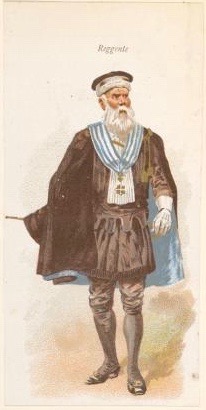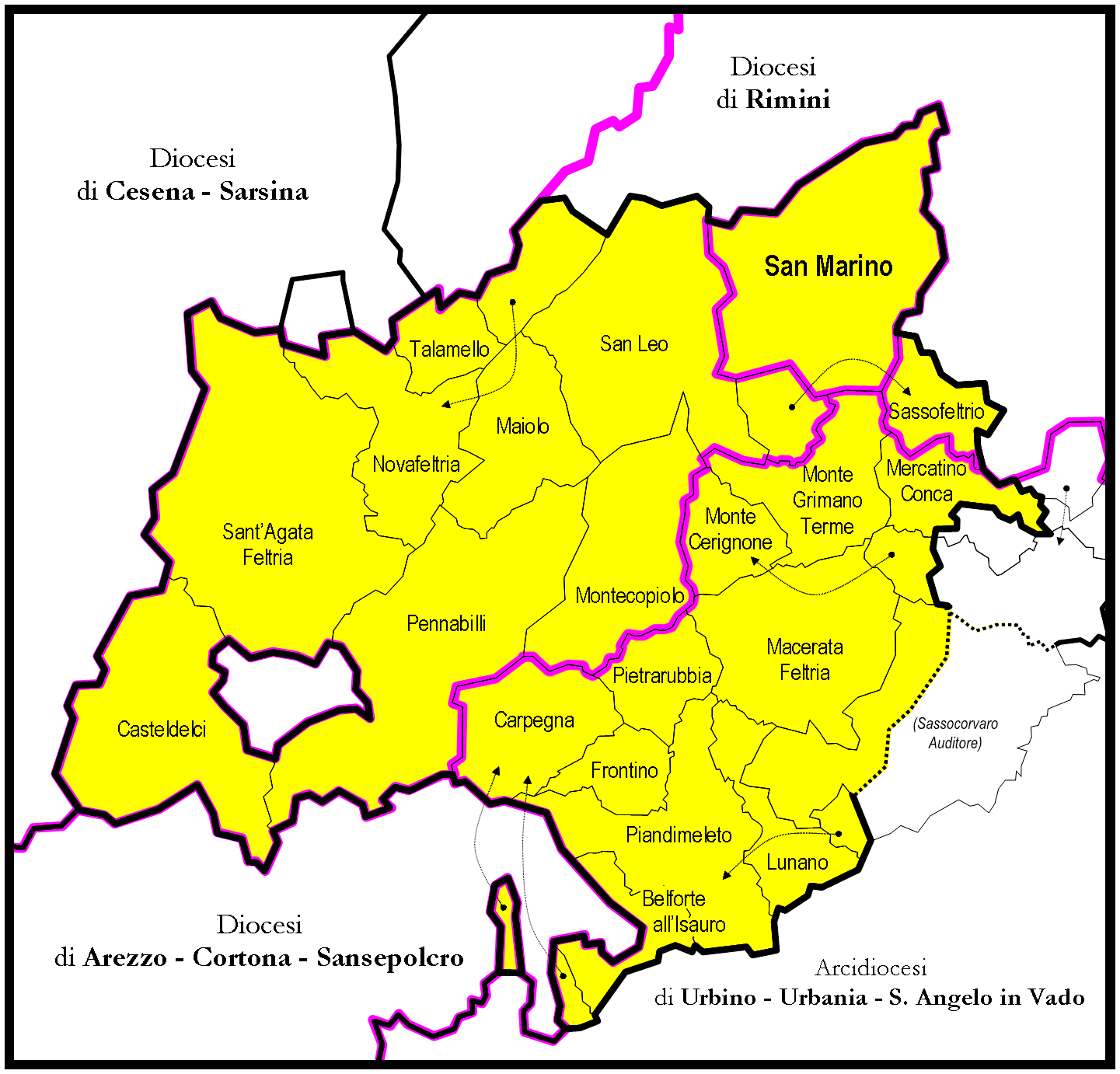|
Captains Regent
The Captains Regent (Italian: ''Capitani reggenti'') are the two heads of state of the Republic of San Marino. They are elected every six months by the Grand and General Council, the country's legislative body. Normally the Regents are chosen from opposing parties and they serve a six-month term. The investiture of the captains regent takes place on 1 April and 1 October every year. This tradition dates back at least to 1243. The practice of dual heads of government (diarchy) is derived directly from the customs of the Roman Republic, equivalent to the consuls of ancient Rome. History The establishment of the regency took place during the first half of the 13th century, when they had the role of managing justice, a task similar to competence of magistrates. During that period they were called consuls, which derived from ancient Rome. The first two known consuls were elected on 12 December 1243 by the Grand and General Council with a six-month term which is still used today. ... [...More Info...] [...Related Items...] OR: [Wikipedia] [Google] [Baidu] |
Maria Luisa Berti
Maria Luisa Berti (born 6 October 1971) is a San Marino, Sammarinese politician who is one of two Captains Regent (heads of government for San Marino) in office from 1 October 2022. Serving alongside Manuel Ciavatta, it is her second term in office. Eleven years prior, she was in the same post for the April to October 2011 political term. Back then, it was shared with Filippo Tamagnini. External linksApril-October 2011 election information (in Italian language, Italian) {{DEFAULTSORT:Berti, Maria Luisa 1971 births Captains Regent of San Marino Members of the Grand and General Council Female heads of state Living people Sammarinese Christian Democratic Party politicians University of Urbino alumni ... [...More Info...] [...Related Items...] OR: [Wikipedia] [Google] [Baidu] |
Vanessa D'Ambrosio
Vanessa D'Ambrosio (born 26 April 1988) was Captains Regent, Captain Regent of San Marino, serving from April until October 2017 (alongside Mimma Zavoli). Early life and education She was born in Borgo Maggiore, San Marino on 26 April 1988. She graduated with a thesis on the economy of labor and the gender issue in Saudi Arabia after the Gulf crisis from the University of Bologna. She is the granddaughter of Francesco Berti, one of the founders of the Sammarinese Communist Party. Career She was elected to the Grand and General Council back in 2014. She was appointed to become a coordinator for the United Left. D'Ambrosio is the second youngest woman who becomes Captain Regent in the history of San Marino after Maria Lea Pedini-Angelini, who was sworn in at the age of 25. Since December 2016, D'Ambrosio is the Head of Delegation for San Marino to the Council of Europe. She participated in the Strasbourg Plenary Session in January 2017, where she signed a motion for the protectio ... [...More Info...] [...Related Items...] OR: [Wikipedia] [Google] [Baidu] |
Politics Of San Marino
The politics of the state of San Marino take place in a framework of a unitary assembly-independent representative democratic republic, whereby the Captains Regent are the heads of state and heads of government. The country has a multi-party system. Executive power is exercised by the government. Legislative power is vested in both the government and the Grand and General Council. The judiciary is independent of the executive and the legislature. San Marino was originally led by the Arengo, initially formed with the heads of each family. In the 13th century, power was given to the Great and General Council. In 1243, the first two Captains Regent were nominated by the council, and that system is still in use today. The Grand and General Council The legislature of the republic is the Grand and General Council (''Consiglio grande e generale''). The council is a unicameral legislature which has 60 members with elections occurring every 5 years under a majoritarian representation sys ... [...More Info...] [...Related Items...] OR: [Wikipedia] [Google] [Baidu] |
Congress Of State
A congress is a formal meeting of the representatives of different countries, constituent states, organizations, trade unions, political parties, or other groups. The term originated in Late Middle English to denote an encounter (meeting of adversaries) during battle, from the Latin '' congressus''. Political congresses International relations The following congresses were formal meetings of representatives of different nations: *The Congress of Aix-la-Chapelle (1668), which ended the War of Devolution *The Congress of Aix-la-Chapelle (1748), which ended the War of the Austrian Succession *The Congress of Aix-la-Chapelle (1818) *The Congress of Berlin (1878), which settled the Eastern Question after the Russo-Turkish War (1877–1878) *The Congress of Gniezno (1000) *The Congress of Laibach (1821) *The Congress of Panama, an 1826 meeting organized by Simón Bolívar *The Congress of Paris (1856), which ended the Crimean War *The Congress of Troppau (1820) *The Congress of Tucu ... [...More Info...] [...Related Items...] OR: [Wikipedia] [Google] [Baidu] |
Excellency
Excellency is an honorific style given to certain high-level officers of a sovereign state, officials of an international organization, or members of an aristocracy. Once entitled to the title "Excellency", the holder usually retains the right to that courtesy throughout their lifetime, although in some cases the title is attached to a particular office, and is held only for the duration of that office. Generally people addressed as ''Excellency'' are heads of state, heads of government, governors, ambassadors, Roman Catholic bishops and high-ranking ecclesiastics and others holding equivalent rank (e.g., heads of international organizations). Members of royal families generally have distinct addresses (Majesty, Highness, etc.) It is sometimes misinterpreted as a title of office in itself, but in fact is an honorific that precedes various titles (such as Mr. President, and so on), both in speech and in writing. In reference to such an official, it takes the form ''His'' or ... [...More Info...] [...Related Items...] OR: [Wikipedia] [Google] [Baidu] |
Honorific
An honorific is a title that conveys esteem, courtesy, or respect for position or rank when used in addressing or referring to a person. Sometimes, the term "honorific" is used in a more specific sense to refer to an honorary academic title. It is also often conflated with systems of honorific speech in linguistics, which are grammatical or morphological ways of encoding the relative social status of speakers. Honorifics can be used as prefixes or suffixes depending on the appropriate occasion and presentation in accordance with style and customs. Typically, honorifics are used as a style in the grammatical third person, and as a form of address in the second person. Use in the first person, by the honored dignitary, is uncommon or considered very rude and egotistical. Some languages have anti-honorific (''despective'' or ''humilific'') first person forms (expressions such as "your most humble servant" or "this unworthy person") whose effect is to enhance the relative honor a ... [...More Info...] [...Related Items...] OR: [Wikipedia] [Google] [Baidu] |
Veto
A veto is a legal power to unilaterally stop an official action. In the most typical case, a president or monarch vetoes a bill to stop it from becoming law. In many countries, veto powers are established in the country's constitution. Veto powers are also found at other levels of government, such as in state, provincial or local government, and in international bodies. Some vetoes can be overcome, often by a supermajority vote: in the United States, a two-thirds vote of the House and Senate can override a presidential veto. Article I, Section 7, Clause 2 of the United States Constitution Some vetoes, however, are absolute and cannot be overridden. For example, in the United Nations Security Council, the permanent members ( China, France, Russia, the United Kingdom, and the United States) have an absolute veto over any Security Council resolution. In many cases, the veto power can only be used to prevent changes to the status quo. But some veto powers also include the ... [...More Info...] [...Related Items...] OR: [Wikipedia] [Google] [Baidu] |
Head Of State
A head of state (or chief of state) is the public persona who officially embodies a state Foakes, pp. 110–11 " he head of statebeing an embodiment of the State itself or representatitve of its international persona." in its unity and legitimacy. Depending on the country's form of government and separation of powers, the head of state may be a ceremonial figurehead or concurrently the head of government and more (such as the president of the United States, who is also commander-in-chief of the United States Armed Forces). In a parliamentary system, such as the United Kingdom or India, the head of state usually has mostly ceremonial powers, with a separate head of government. However, in some parliamentary systems, like South Africa, there is an executive president that is both head of state and head of government. Likewise, in some parliamentary systems the head of state is not the head of government, but still has significant powers, for example Morocco. In contrast, ... [...More Info...] [...Related Items...] OR: [Wikipedia] [Google] [Baidu] |
Bishop Of San Marino
The Italian Catholic Diocese of San Marino-Montefeltro was until 1977 the historic Diocese of Montefeltro. It is a Latin suffragan of the Archdiocese of Ravenna-Cervia."Roman Catholic Diocese of San Marino-Montefeltro" ''Catholic-Hierarchy.org''. David M. Cheney. Retrieved February 29, 2016"Diocese of San Marino-Montefeltro" ''GCatholic.org''. Gabriel Chow. Retrieved February 29, 2016 The current diocese includes all the parishes of San Marino. It has its collegiate cathedral episcopal see S. Bartolomeo, dedicated to the Apostle St. Bartholomew, in Pennabilli, Rimini, Emilia Romagna, and two Co-Cat ... [...More Info...] [...Related Items...] OR: [Wikipedia] [Google] [Baidu] |
Basilica Of San Martino
The Basilica of San Martino is a church in piazza Italia at the junction of via Fantoni and via Roma in the historic centre of the north Italian town of Alzano Lombardo. Dedicated to Martin of Tours, it was promoted to the status of a minor basilica in 1922 by Pope Pius XI. Adjoining it is the San Martino Museum of Religious Art, named after the basilica. History It is first recorded in 1023, when it occupied a much smaller buildings. Several others were built over it over the centuries, including the much larger 15th century version with a stone campanile, of which only the campanile survives. Early in the 17th century the generous bequest of 1,700 Italian scudo, scudi from Bernardino Fugazza, a citizen of the town, allowed the chancel to be rebuilt. At the same time the paintings ''The Miracle of St Martin'' and ''Saint Martin in his Cathedra'' were commissioned from Gian Paolo Cavagna, as well as ''St Martin and the Poor Man'' on the counter-facade. The present structure als ... [...More Info...] [...Related Items...] OR: [Wikipedia] [Google] [Baidu] |
Sammarinese Armed Forces
The Sammarinese Armed Forces ( it, Forze Armate Sammarinesi) refers to the national military defence forces of the Republic of San Marino. It is one of the smallest military forces in the world, with its different branches having varied functions including: performing ceremonial duties; patrolling borders; mounting guard at government buildings; and assisting police in major criminal cases. There is also a military Gendarmerie which is part of the military forces of the republic. The entire military corps of San Marino depends upon the co-operation of full-time forces and their retained (volunteer) colleagues, known as the , or Voluntary Military Force. National defence in the face of an aggressive world power is, by arrangement, the responsibility of Italy's armed forces. The component parts of the military (other than the purely historical Crossbow Corps) are distinguished (as in many nations) by distinctive cap badges, one each for the Fortress Guard (uniformed), Fortress Guard ... [...More Info...] [...Related Items...] OR: [Wikipedia] [Google] [Baidu] |
Jus Sanguinis
( , , ; 'right of blood') is a principle of nationality law by which citizenship is determined or acquired by the nationality or ethnicity of one or both parents. Children at birth may be citizens of a particular state if either or both of their parents have citizenship of that state. It may also apply to national identities of ethnic, cultural, or other origins. Citizenship can also apply to children whose parents belong to a diaspora and were not themselves citizens of the state conferring citizenship. This principle contrasts with '' jus soli'' ('right of soil'), which is solely based on the place of birth. Today, almost all states apply some combination of ''jus soli'' and ''jus sanguinis'' in their nationality laws to varying degrees. Historically, the most common application of ''jus sanguinis'' is a right of a child to their father's nationality. Today, the vast majority of countries extend this right on an equal basis to the mother. Some apply this right irrespecti ... [...More Info...] [...Related Items...] OR: [Wikipedia] [Google] [Baidu] |





